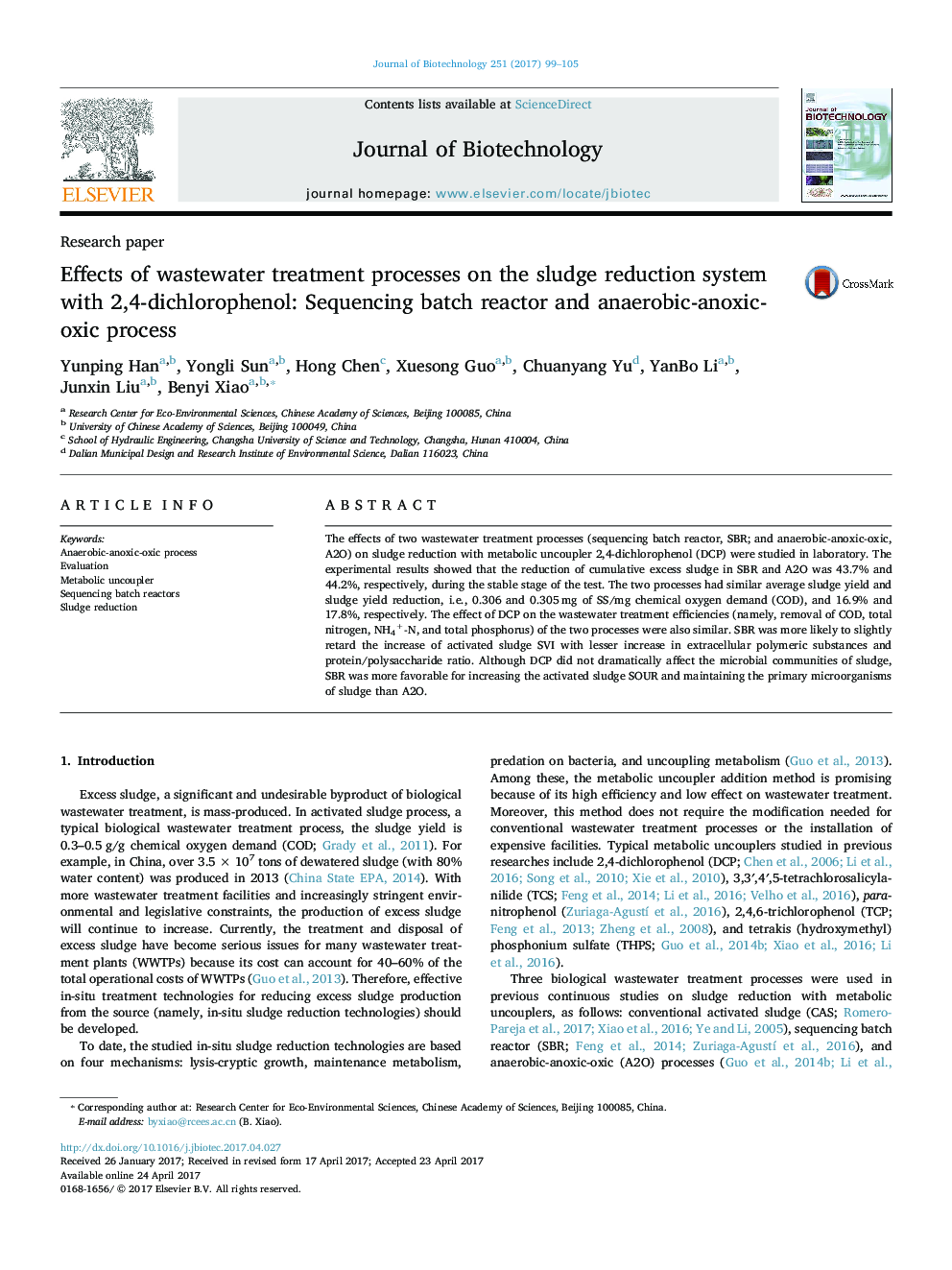| Article ID | Journal | Published Year | Pages | File Type |
|---|---|---|---|---|
| 6452078 | Journal of Biotechnology | 2017 | 7 Pages |
â¢Effects of 2,4-dichlorophenol on two wastewater treatment processes were studied.â¢2,4-Dichlorophenol led to similar sludge reduction on two processes.â¢Sequencing batch reactor was more likely to retard an increase of sludge volume index.â¢2,4-Dichlorophenol did not dramatically affect microbial communities of sludge.
The effects of two wastewater treatment processes (sequencing batch reactor, SBR; and anaerobic-anoxic-oxic, A2O) on sludge reduction with metabolic uncoupler 2,4-dichlorophenol (DCP) were studied in laboratory. The experimental results showed that the reduction of cumulative excess sludge in SBR and A2O was 43.7% and 44.2%, respectively, during the stable stage of the test. The two processes had similar average sludge yield and sludge yield reduction, i.e., 0.306 and 0.305Â mg of SS/mg chemical oxygen demand (COD), and 16.9% and 17.8%, respectively. The effect of DCP on the wastewater treatment efficiencies (namely, removal of COD, total nitrogen, NH4+-N, and total phosphorus) of the two processes were also similar. SBR was more likely to slightly retard the increase of activated sludge SVI with lesser increase in extracellular polymeric substances and protein/polysaccharide ratio. Although DCP did not dramatically affect the microbial communities of sludge, SBR was more favorable for increasing the activated sludge SOUR and maintaining the primary microorganisms of sludge than A2O.
